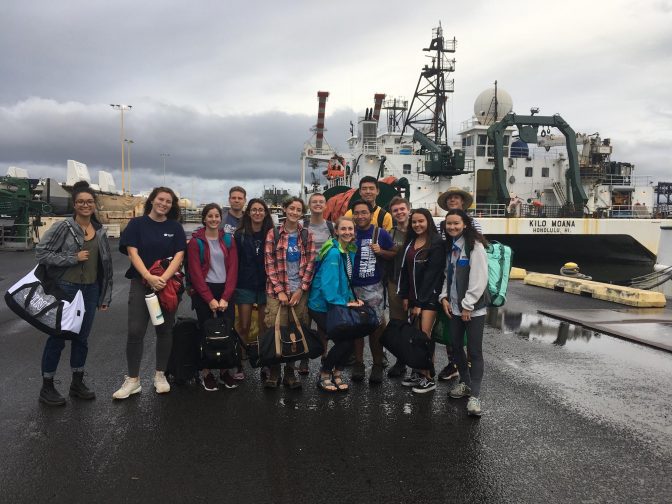By Staff Reports
(Hawaii)– Ten motivated undergraduate students arrived at the University of Hawaiʻi at Mānoa recently to participate in a summer research internship, Earth Science on Volcanic Islands, hosted by the UH Mānoa Department of Earth Sciences. The opportunity, funded for three years by the National Science Foundation’s Research Experience for Undergraduates program, seeks to increase participation in the STEM (science, technology, engineering and math) workforce by underrepresented groups.
“The goal of our program is to find highly qualified students for whom participation will have the biggest impact, and provide them with cutting-edge earth science research opportunities in Hawaiʻi,” said Paul Wessel, program director and chair of the Department of Earth Sciences in the UH Mānoa School of Ocean and Earth Science and Technology. “These 10 students were selected from a large pool of over 300 applicants, and represent a vibrant and diverse cohort of undergraduate students from across the country. They are a smart and hard-working group and are very excited to be spending their summer in Hawaiʻi.”
The internship program takes advantage of the unique tropical volcanic islands and surrounding marine environments in Hawaiʻi. Led by SOEST earth sciences faculty, the cohort departed on a three-day expedition on the UH Mānoa research vessel Kilo Moanato a previously unsampled submarine volcanic rift zone located west of Kaho‘olawe.
The current geologic map for Kaho‘olawe is largely based on a map drafted in 1940. At present, only 14 rock samples from there have been age-dated and about 50 have been analyzed for rock type and chemistry. Therefore, a primary goal of this student-focused research cruise was to collect a broad range of rock samples from the nearby seafloor to improve data on rock chemistry, volcanic history and age estimates of this rift zone and enhance understanding of how this area is related geologically to Kaho‘olawe and Maui.
For the remainder of the nine-week internship, students are assigned to work with faculty throughout the school, with mentors from the earth sciences and oceanography departments as well as the Hawai‘i Institute for Geophysics and Planetology and the botany department.
Participants will conduct a wide range of original research, including studies of active and inactive Hawaiian volcanoes, environmental science in tropical watersheds and coastal environments, effect of ground water discharge on corals, mapping and modeling of Earth processes, and much more.
“Taking part in a 3-day seagoing expedition to investigate important science questions that are today, still unanswered, about the evolution of the Hawaiian Islands, can be a real career-shaping experience for these students,” said Bridget Smith-Konter, UH Mānoa earth sciences associate professor and coordinator of the REU program. “Among this group of rising students are our future volcanologists, geophysicists, and environmental scientists and engineers. Novel research experiences like these, beyond traditional academic work, provide a truly unique perspective and appreciation of research for these emerging earth science stewards.”
See the UH News story, with social media video, at https://www.hawaii.edu/news/2019/07/05/manoa-soest-reu-interns/

